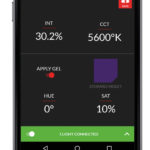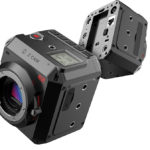
RED Hydrogen ONE
Posted on Jan 21, 2019
Is it just a phone or is it part of the mobile cinematography future?
 You’ll be able to add a power pack for increased battery life, expand the phone’s memory or attach a cinema grade camera module.
You’ll be able to add a power pack for increased battery life, expand the phone’s memory or attach a cinema grade camera module.
Waiting for delivery of my RED HYDROGEN One (RH1), the latest endeavour for a company that changed the cinematography landscape, has been rather tedious. In the current technology market, delivering a product sufficiently advanced enough to wow the community is difficult, to say the least. However, when production issues and certification delays push the launch out nearly a year beyond the earliest projected release date, it can hurt, especially when products are finally being delivered 68 weeks (15 months) after spending $1295.00 USD to place an order for the device.
As an iPhone user, jumping into Android was mildly painful, but I did not meld the data between my RH1 and my iPhone X, keeping the discomfort to a minimum. As with any new tech, the first task was to update the software and apps before any testing could begin. As I found out later online, it was a habit that insured I had a better first experience than others.
 The RH1 may open up a new world of art and journalism.
The RH1 may open up a new world of art and journalism.
Screen tech
There are two features that truly stand out with this device. One is the glassless 3D tech via the Leia screen technology, even though some images look more along the lines of the Nishika or lenticular, rather than as immersive 3D – it is a huge step forward in the display tech. The second is the associated A3D audio. If you think about the RH1 as just a camera/phone, you should hear the undeniable quality of the A3D audio output, which, in this reviewer’s mind, is nothing short of unbelievable on this type of device.
The RH1’s front and rear facing dual lens cameras offer the user 2D with ‘bokeh’ mode and the ability to capture true 3D content, in the .h4v format. Due to the nature of shooting 3D, the cameras are only capable of recording 3D when the dual lens configuration is oriented in side-by-side mode, so the 3D from the rear camera is in landscape and the 3D from the front facing camera is always in portrait mode.

The h4v format’s readability is based on the device used, delivering 2D when not viewing on a Leia-enabled device. I unsuccessfully tried to see if the content was externally viewable on a 3D compatible TV, but I was not able to display the content correctly in either SBS or OverUnder modes compatible with my LG set while using an Apple USB-C to HDMI adaptor. Hopefully this is a software-only issue with a new released device. Editing is also problematic at this time. There is no software included to edit the images or videos. While Premiere Pro can open the files, this requires changing the suffix from .h4v to .mp4.
Image quality
I found the images and video in 2D to be a bit undersaturated, and a touch soft as compared to my iPhone. The low light images look astounding with a texture in the out of focus areas resembling the grain of film. The 3D images leap out at you in the right context. With something close to the screen, wide shots and vistas do not handle the 3D well here. For the 3D to work, I suggest users start out with an ‘in-your-face’ 3D for the most enjoyment when starting out.
While somewhat larger and noticeably heavier than my iPhone X, the aluminium RH1 is substantially built, with a textured grip and scalloped edges giving it a secure, tactile feel in the hand. It’s configured externally with a headphone jack, volume control buttons, a fingerprint scanner and a dedicated shutter button for the camera. New users only need to turn the device over and see the connections on the back of the phone to understand why many shooters want to get one. Little has been released on the nature of what might be available as externalised modifications to the list of upgrades.
The future?

I eschewed RED’s cine camera offerings for a long time, yet the steps the company have taken in recent years have changed my perspective. I purchased a RH1 for the glimmer of a mobile-centric cinematic future, driven by the now waning DSLR craze, as users look to smaller, lighter, more portable ways to maintain their edge creatively. Since the RH1 has not evolved beyond what I ordered 15 months ago, it is nearly out of date as a mobile phone.
Yet, I see a new world of art and journalism in it, driven by a new generation of mobile devices, no longer just a juiced-up phone, but the basis for truly portable ecosystem designed around not what is now, but what will be needed in the future.
Reviewer
Gary Adcock is a technology-driven synergist in acquisition, editing and delivery of the advanced workflows required for Media and Entertainment. He is a technologist in defence and manufacturing, as well as an established producer, director and cinematographer. From his US base in Chicago, Gary offers developmental insights into all aspects of the continually changing pre-production, post and production marketplace, while focusing on advancing cinema product development, international branding and market penetration in Media and Entertainment.











